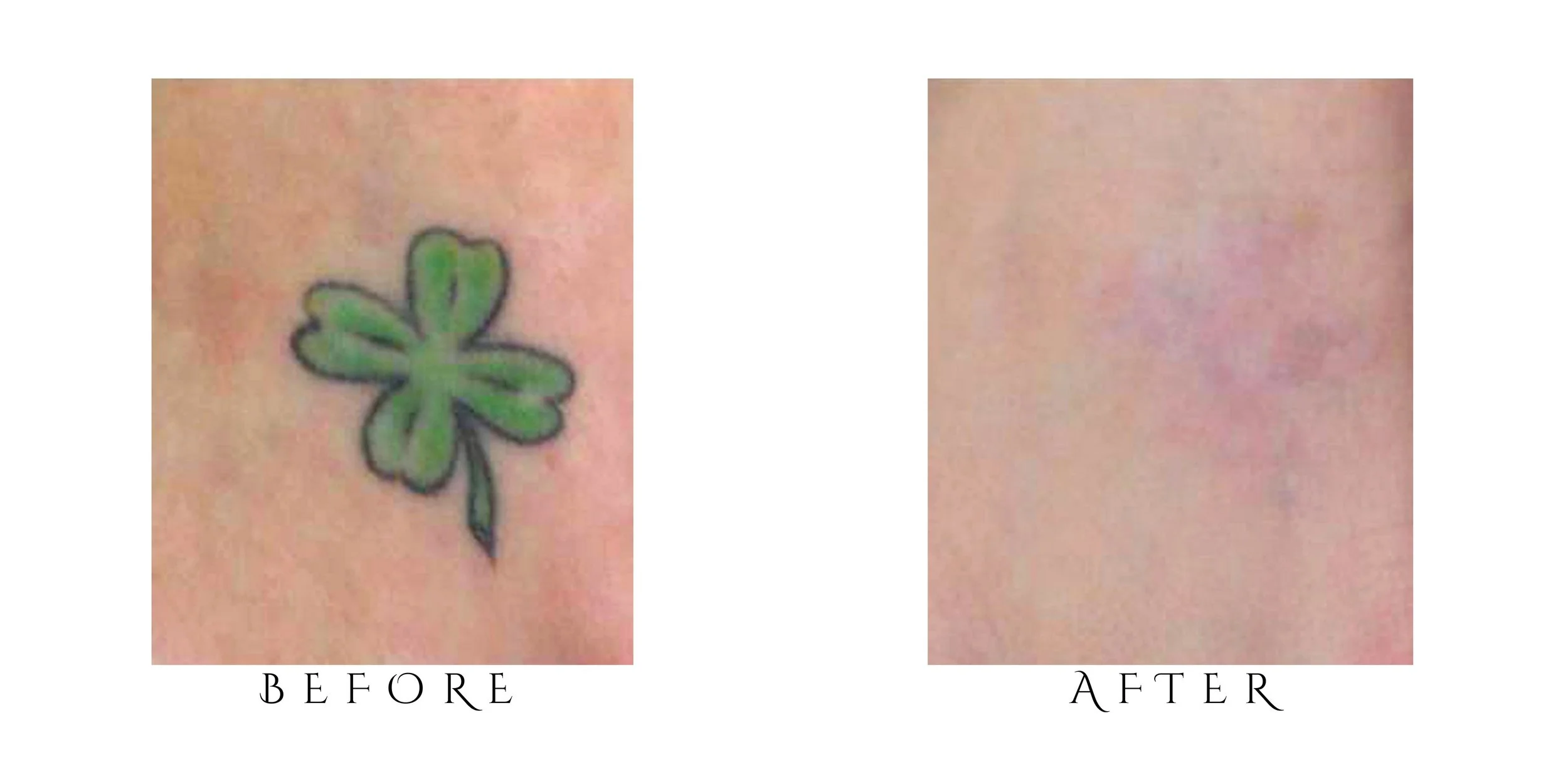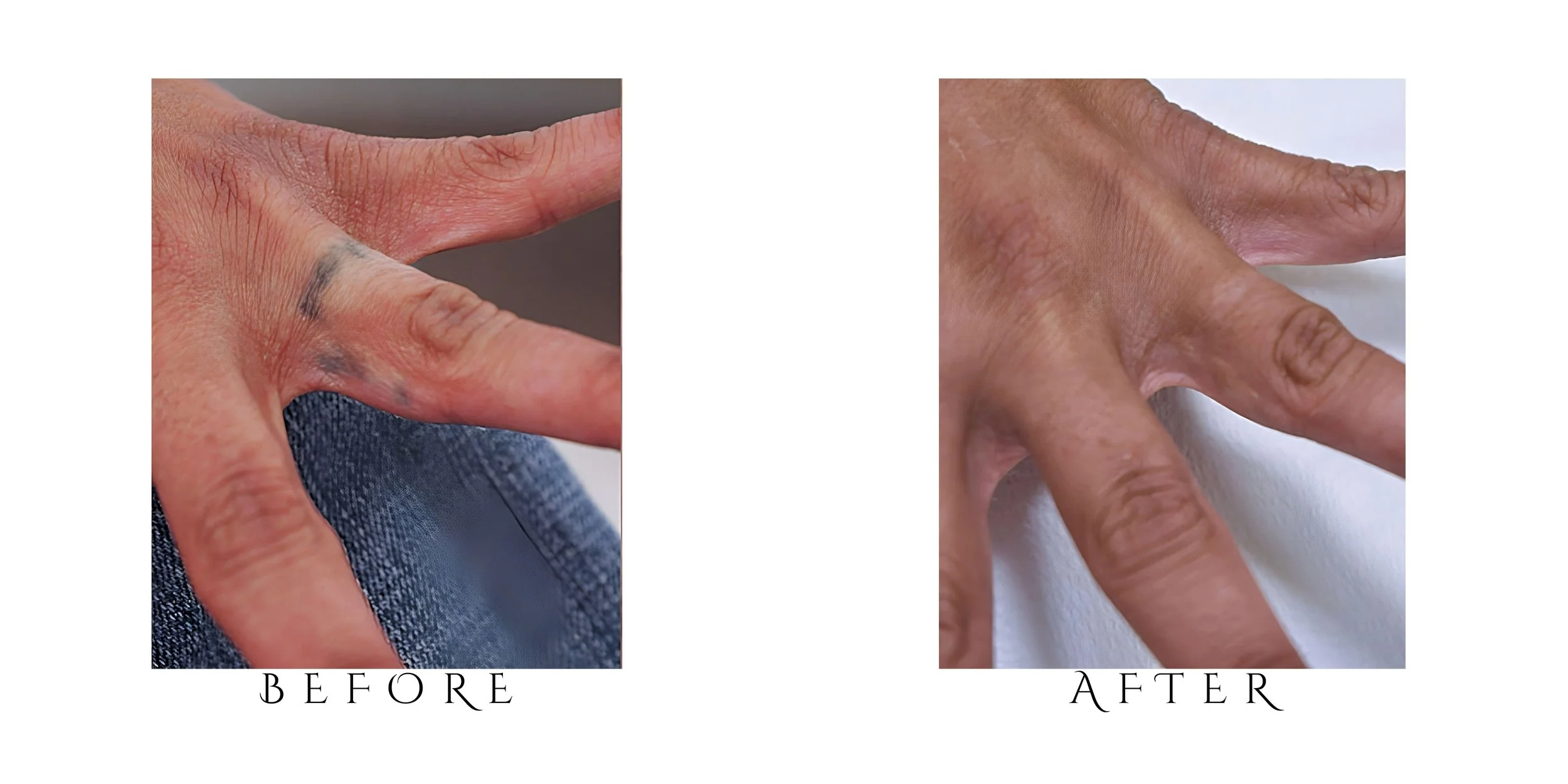Tattoo Removal
While tattoos are popular, many people live with unwanted body art. A tattoo may have seemed like a good idea at the time but now it no longer fits in with your life or style. What’s more, tattoos can end up affecting your career and a poorly designed tattoo can affect your self-confidence as well.
Modern laser systems should be able to treat:
Multi-colored tattoos, including blues and greens
Hard-to-remove black ink
Stubborn, previously treated tattoos
Before you undergo laser tattoo removal, schedule a consultation with a licensed practitioner. During this meeting, you will learn about what to expect and how many sessions you will require to remove your unwanted body art.
During your session, a laser applicator will deliver energy into the ink particles of the unwanted tattoo. The heat from the laser breaks these particles into smaller pieces that the body can naturally eliminate. The process is gradual, requiring patience and multiple sessions to achieve desired results. Certain areas of the body, tattoos with older ink, and those that are lighter in color are more difficult to treat.
How Laser Tattoo Removal Works?
There is no downtime following laser tattoo removal, but patients must clean and protect the area from harmful UV rays (e.g. sunlight). The average treatment takes about an hour to complete, and each treatment will take place at six to eight-week intervals.
After your session, the treated area will be slightly red and swollen. It may also be tender. It should scab over within several days and flake off after that. You should not pick at or scratch the area, as this can cause scarring. Keeping the area clean and allowing it to heal completely is important to avoid infection between treatments.
Laser Tattoo Removal FAQs
Does tattoo laser removal hurt? Your laser tattoo removal treatment will feel similar to the way your original tattooing session felt. Your provider might offer you numbing cream to minimize any discomfort during treatment. This should take about 30 minutes to take effect. Your skin will also feel tender after your appointment, but it is unlikely that you will require pain medication.
How long are treatments? Treating an average-sized tattoo takes around 10 minutes. Treatments can be longer depending on the size of the tattoo being treated and how many tattoos are being treated at once.
How many treatments are needed? It is important to understand that the number of treatments needed for tattoo removal will vary from person to person and depends on variables such as the type of ink used in the tattoo, the size of the tattoo, where it was placed on the body, your lifestyle habits, and so on. Your healthcare provider can provide you with a more personalized estimate during your consultation.
Is laser tattoo removal right for me? Laser treatments are available for all skin types, but certain ink pigments are more difficult to treat than others. Your practitioner can advise you on whether any medical concerns, medications, or supplements could affect your results.
How to prepare for laser tattoo removal? To better prepare for your treatment, avoid tanning at least two weeks before your appointment. Do not smoke or take medications that increase the risk of bleeding and bruising two weeks before your session. Be sure you are hydrated on the day of your procedure.
Does this procedure leave patients with scarring? Although laser tattoo removal will not leave you with scarring, it may do so if the necessary aftercare instructions are not followed. If you are prone to keloid scarring, you should mention this to your provider during your consultation because there are steps that can be taken to minimize the risks.
Is there a chance my tattoo won’t be completely removed? While certain colors are more difficult to remove than others, patients will almost always be able to remove most of the ink. Aged tattoos and any body art that is present on thick skin are more difficult to remove. In some instances, a very light shadow of the former tattoo can be seen but this will also fade gradually over time.
The above-mentioned list is not definitive and may differ in the treatment of your specific skin condition. Furthermore, depending on your case, the procedures can be used alone or in combination. Your doctor will select the best treatment strategy according to your individual specifications.
Dr. Lola Ali is a professional skincare therapist with over 20 years of experience helping people achieve younger, brighter, and healthier skin. If you would like to know more about your specific aesthetical skin condition and available treatment approaches, please do not hesitate and book your first free skincare check-up and consultation with her.











